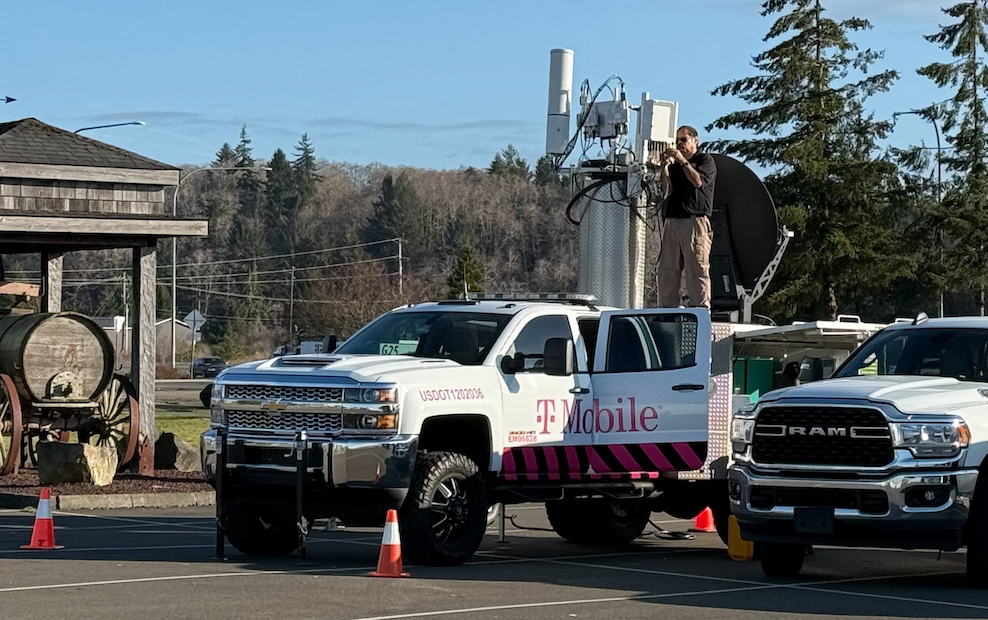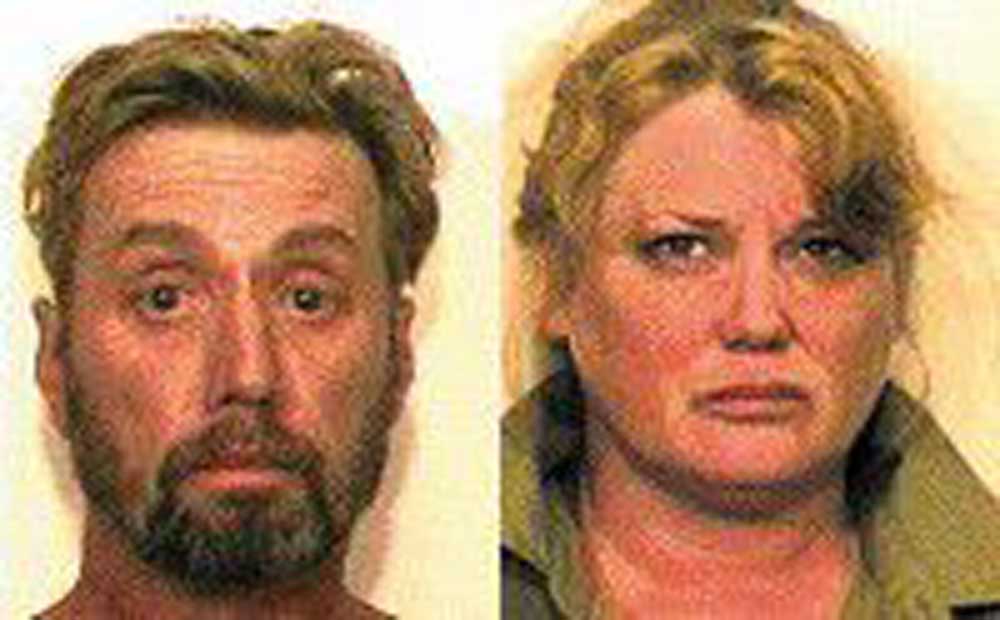Windstorm toppled major cell tower outside of Raymond
Published 11:07 am Friday, February 28, 2025

- A technician assembles a temporary cell phone-receiving station in north county after an intense windstorm damaged one of the area’s primary towers, affecting service to thousands.
PACIFIC COUNTY — A quick peek up onto the hillside above State Route 105 just outside Raymond will have anyone wondering, “What happened to the tallest radio tower?” Residents in the area with any of the cellular carriers, including Verizon, AT&T and T-Mobile, can tell you precisely what happened.
Trending
“The damn tower broke in half.”
What was supposed to be a typical winter-like Pacific Northwest storm over Feb. 24-25 turned out to be among the worst storms the county has seen in years. This most recent storm has not been named, but it sure packed a punch.
Winds for the storm hit early on Feb. 24, with gusts easily up to 40-50 mph throughout most of the day. By late evening, the pummeling was unleashed, and sustained winds were 30-40 mph with gusts of 60-70 mph.
Trending
The highest wind gust was 88 mph, observed at the mouth of the Columbia River and Cape Disappointment. The winds, including strong sustained winds, held strong for over 12 straight hours. The Astoria-Megler Bridge was functionally impassible in the middle of the night, with gusts topping 60 mph on the high-rise.
At the peak of the storm, every major roadway in and out of the county was either partially or completely blocked by debris, including trees. Multiple times, by the time responders had cleared, another followed. There were widespread power outages, with part of the northern peninsula without electricity for most of the following day.
One of the biggest affects of the storm in the north county region arrived when many residents noticed they no longer had cell phone service around midnight to 1 a.m. The belief was that it was just a usual major storm outage — on the contrary, it was anything but that.
Cell tower damaged
The Holy Cross radio towers site, located atop the hillside just outside Raymond above the rock quarry, provides the region with its primary cell phone coverage. When the cell phone signal went down, so did part of the tower.
“You can look up to the top of Holy Cross, and it looks like a 250-foot tower, and it looks like it broke off somewhere around the 100-foot mark,” Pacific County Emergency Management Agency Director Scott McDougall said.
“I do not know why, but you can look up there with binoculars and you can see the old part of the tower just lying on the ground,” he added.
It is unclear why the tower failed during the storm, since towers are built to withstand hurricane-force winds. It could be some time before it is determined, which may not be made public because it’s a private commercial tower.
The outage affected several thousand cell phone users, notably T-Mobile, which has been the most significantly affected. Cell phone users could only connect to services via WiFi.
According to McDougall, the outage also affected the police and fire departments in both Raymond and South Bend.
Quick temp fix
McDougall, in partnership with the substantial resources he has built and the Washington Emergency Management Division, was able to find a short-term solution.
Approximately 48 hours after the tower crumbled, T-Mobile rolled in two SatCOLT trucks, which are highly mobile heavy-duty trucks with cell towers built in. The vehicles can roll into an area, such as those with disasters, and restore temporary service relatively quickly.
“Previously, we haven’t had one in a while; a couple of times a year, we would have what’s called a [convention], which is basically an emergency communications summit with local emergency managers, industry emergency managers and state emergency managers where we talk about the technology that is out there,” McDougall said. “What the capabilities are of the cellphone companies in the event communication is interrupted.”
“On the basis of that work we have done previously where we established these Blue-Sky relationships when this happens, I knew who to call to get the process started. I know that all three companies, Verizon, AT&T and T-Mobile, lost their antennas on that tower, and now we are trying to figure out what the best course of action in the future is,” he added.
It is expected that the cell tower outage could last through at least July for all three cell phone carriers. Verizon and AT&T were initially able to keep service going with a backup generator but have since lost all power at the Holy Cross tower site.
McDougall is working with the two carriers to get deployable assets into the area quickly, which he states is part of an “evolving situation.”
T-Mobile plans to keep the SatCOLTS that have already been deployed in the area until there is a permanent tower solution. The company is also evaluating ways to increase the service coverage area covered by the mobile SatCOLTs.
The outage has once again showcased the importance of redundancies in preparedness. During the outage, a significant number of residents in the north county region had no way of communicating.
Preparedness
With landline phones becoming less common, McDougall suggests residents take this situation as a chance to broaden their preparedness.
The author of this article was one of the many affected by the outage and resorted to handheld radio communications to keep family in communication.
Amateur ham radio is a growing hobby around the area, and the local club hosts monthly meetings in Naselle. Another worthy recommendation is a General Mobile Radio Service license (GMRS), which costs $35 for a 10-year license and covers an entire family.
“Just as the county tries to have redundancy systems in place, people in the community need to understand that we live in an area where natural disasters can occur that wipe out our ability to communicate,” McDougall said.
“We also live in an era where I am worried about, for example, some of the geomagnetic storms that we had earlier in the year and having these systems fail on a broader scale due to other influences other than just the weather,” McDougall said.
Among McDougall’s biggest concerns is the ability of a bad actor to take down modern communications nationwide.
“I would encourage people to have redundancy in their communications,” he said.









